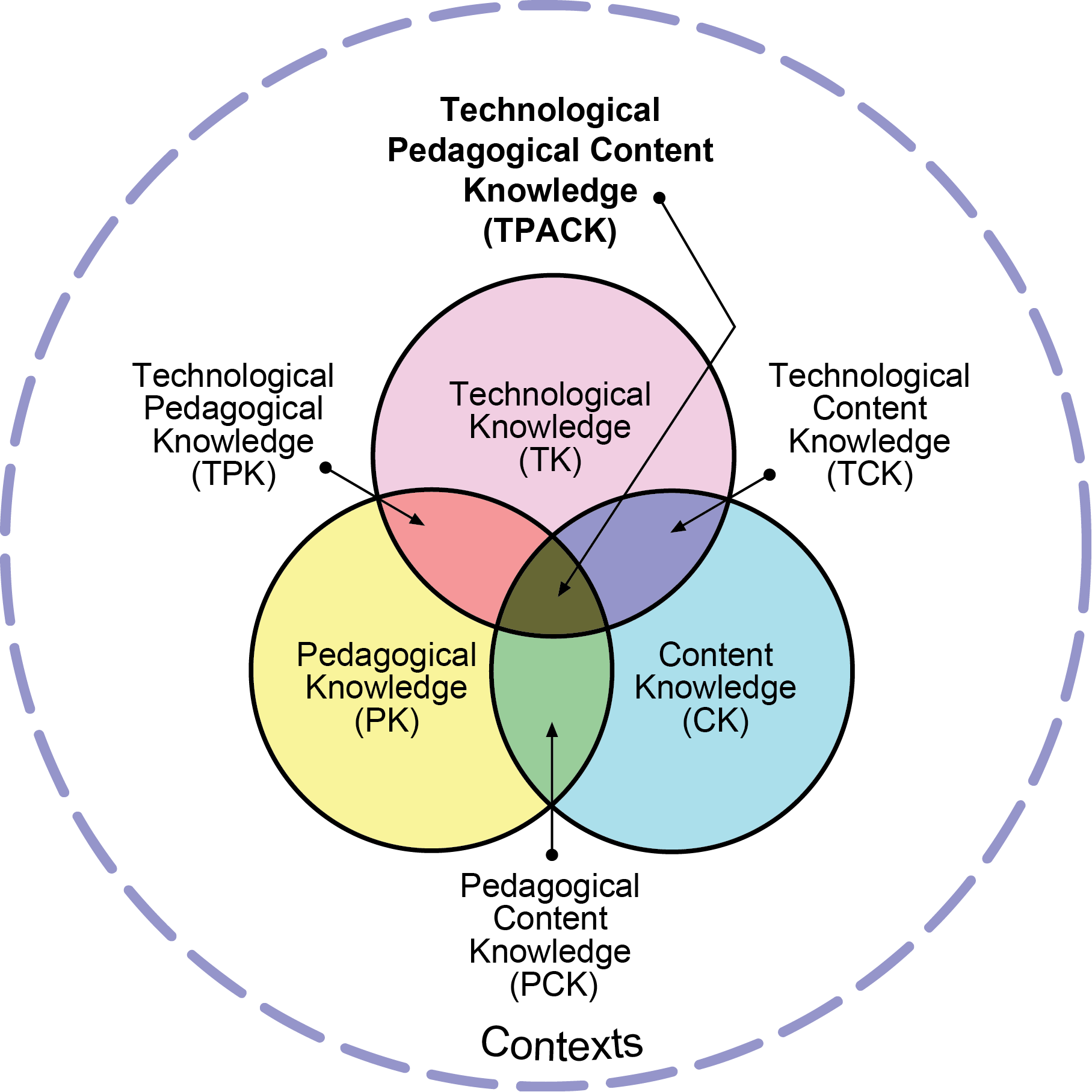Koehler, M. J., & Mishra, P. (2009)
Much of my initial teaching practice was based on the practices of teachers I admired as a student, and the way they presented some of the materials. Later I also relied on personal experience of what seemed to work. For example, I learned the importance of visual aids in some of my courses fairly early, and used it as much as I could to help my students.
I also did my best to link the new material being presented to things my students were already likely to know, either from my previous lectures or from other courses. This was a practice that made sense to me based on my understanding of the neuroscience research (vanKersteren et al., 2014), but turns out to also have strong support in Constructivist literature (Alber, 2011). For example, both, Vygotsky and Piaget argued that new knowledge is built upon pre-existing knowledge. In fact, I made use of this very idea in my design of an online tutorial for a group project in ETEC 512 presenting the ideas of Lev Vygotsky.
Additionally, ETEC 512 and ETEC 530 gave me an opportunity to directly apply my learning to my existing teaching practice in the form of Lesson Plan Analysis, which I found to be very beneficial.
Gaining a Better Understanding of Constructivism (UBC – ETEC 530)
I approached these assignments with different aims. The ETEC 512 exercise focused more on applying multiple learning theories within one lesson – partially in an effort to try to appeal to different types of learners, and partially as a challenge to myself to use as many of the things I learned in the course as possible. My work in ETEC 530 focused more on having a solid theoretical foundation for a constructivist approach to presenting a lesson.


